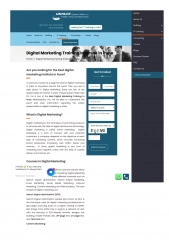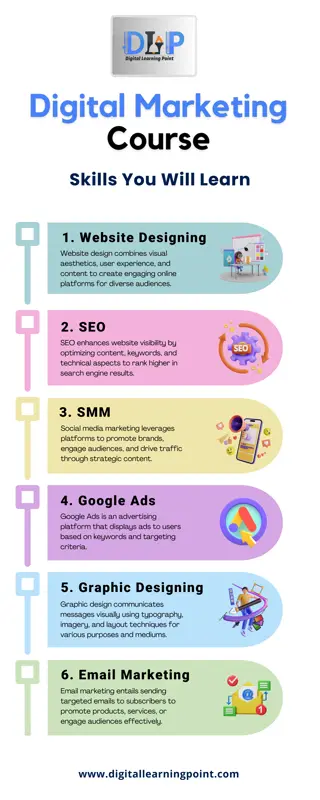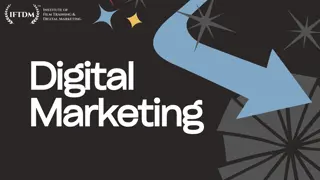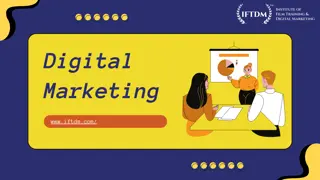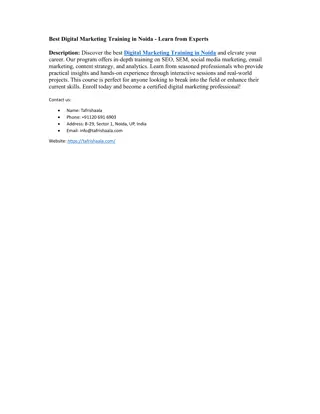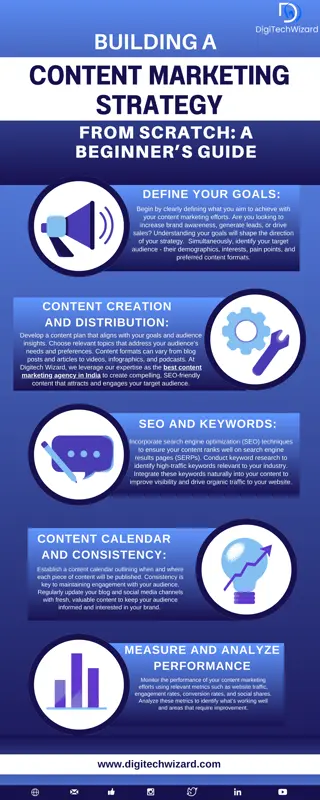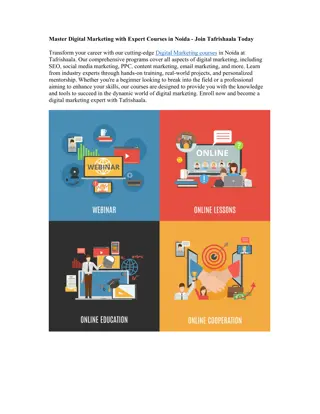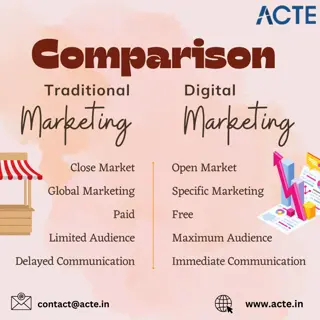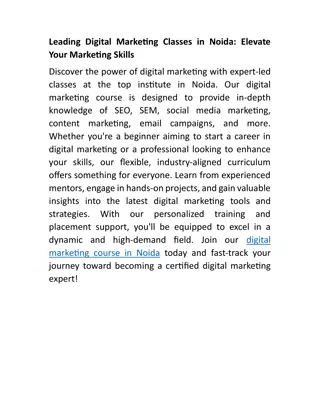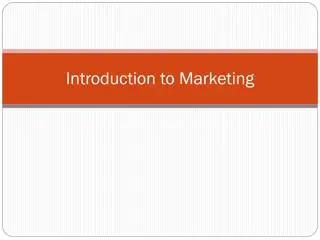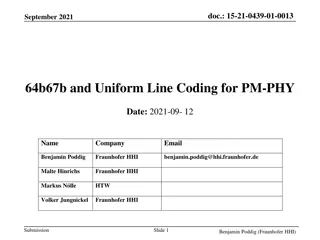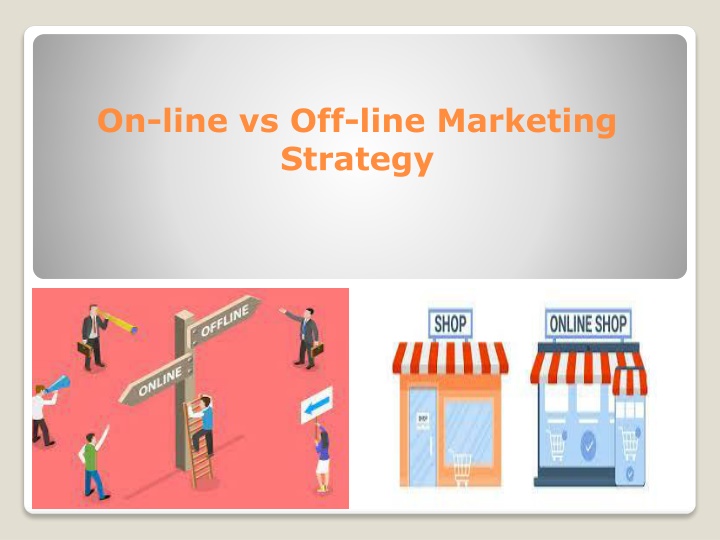
Online vs Offline Marketing: Strategies, Pros, and Cons
Explore the differences between online and offline marketing strategies, including their pros and cons. Online marketing offers measurability, global reach, and direct feedback, while offline marketing excels in building trust quickly. Understand the advantages and challenges of both approaches to tailor your marketing strategy effectively.
Download Presentation

Please find below an Image/Link to download the presentation.
The content on the website is provided AS IS for your information and personal use only. It may not be sold, licensed, or shared on other websites without obtaining consent from the author. If you encounter any issues during the download, it is possible that the publisher has removed the file from their server.
You are allowed to download the files provided on this website for personal or commercial use, subject to the condition that they are used lawfully. All files are the property of their respective owners.
The content on the website is provided AS IS for your information and personal use only. It may not be sold, licensed, or shared on other websites without obtaining consent from the author.
E N D
Presentation Transcript
On-line vs Off-line Marketing Strategy
Online Marketing: Online Marketing utilises the Internet, its tools and applications to increase brand awareness. This includes registering on online listings, search engine optimisation (SEO), website creation, social media, online banner advertisements, email marketing, video blogging, and others.
Pros of Online Marketing There are plenty of advantages businesses can gain when using this new form of marketing. It is more measurable. You can easily see the real-time results and measure the return on investment (ROI) of online marketing activities using online tools. You can see how many impressions, follows, likes, views, shares, and even purchases. It is convenient. Online marketing is accessible to all types of businesses from all over the globe as long as they have a computer and Internet connection. It has a global reach. Businesses are not limited to promoting their brand in their neighbourhood. Their business will be able to reach customers even outside their country. It allows for direct feedback from customers. Customers can just send an email or comment on your post if they have any comments, questions, and criticisms of your business. Meanwhile, you can quickly address their concerns through the appropriate channels.
Cons of Online Marketing Though online marketing has many benefits, there are also some downsides. It requires special expertise. You need to learn how online marketing and online functions work before you can master how to make effective online marketing strategies. It cannot reach those who are offline. With online marketing you cannot reach audiences, which do not use technology, have decided to switch off or simply got too annoyed with ads and turned off their social media adverts or decided to pay for applications that don t contain ads. The competition is tough. With so many local and international businesses marketing their brands online, it is difficult to make your brand stand out in the digital space. It takes a while to build trust. People are always prone to online fraud, fake links, hacking, and data breaches when they participate in online activities. This makes it hard for customers to trust anything online.
What is Offline Marketing Offline Marketing refers to creating brand awareness through traditional marketing strategies. These strategies do not involve the direct use of the Internet. This includes television and radio ads, direct mail, print publications, outdoor advertising, joining trade shows and festivals, promotional gifts, and even word-of- mouth.
Pros of Offline Marketing Offline marketing is quite underestimated nowadays for the impact that it has. It builds trust faster. Any business that uses high-quality traditional marketing media looks more credible in the eyes of the customer. It creates a long-lasting impression on customers. According to marketing statistics, people remember traditional ads, particularly print ads like flyers, brochures and posters, better than online ads. Reading traditional ads requires more focus, since there are no distracting pop-up ads and notifications. It cannot be ignored. People encounter different forms of offline marketing when they go out into the world, whether they like it or not. It can be in the form of outdoor advertising, radio advertisements, product packaging, or even a flyer given to them on the street. It can target people offline. A large chunk of the population, the older generation, those who chose to switch off and all those people, who for one reason or another are not online. Offline marketing helps brands target these groups.
Cons of Offline Marketing While there are numerous benefits to using offline marketing, it does have its limitations: Its effectiveness cannot be accurately measured. Though marketers have found ways to track the effectiveness of some offline marketing materials, their method of tracking is limited. It can be costly. While print marketing is cheap, other forms of offline marketing such as magazines, billboards, and television ads are expensive. This is due to costs in labour, production, distribution, and ad space. Its reach is limited. It all depends on your marketing budget. If you have a limited budget, it will be hard for you to target areas outside your neighbourhood. Print ads are allowed only for a limited amount of time. When you are using an ad space, you can only run your offline marketing in the period you paid for.
To determine which strategy brings more business to restaurants, it largely depends on the restaurant's target audience and location. A combination of both online and offline strategies can be effective. For instance, using online marketing for global reach and data- driven insights and offline marketing for local engagement and personal touch can yield the best results.
Here's a case study illustrating the success of a combined online and offline marketing strategy for a restaurant: Case Study: Restaurant X Restaurant X, located in a small town, wanted to boost its business. They combined online and offline marketing strategies: Online Presence: They created an attractive website, optimized for mobile devices, and set up profiles on various social media platforms. They used online advertising to target potential customers from nearby cities. Local Partnerships: They partnered with local businesses and advertised in community newsletters. They also sponsored community events and had a presence at local festivals. Customer Engagement: Restaurant X engaged with customers through social media by posting updates, running contests, and sharing user- generated content. Loyalty Program: They launched a loyalty program where customers could earn discounts for repeat visits. Offline Events: The restaurant organized themed nights, live music, and charity events to attract a local crowd. As a result, Restaurant X saw a significant increase in both online and foot traffic. The combination of online visibility and local community engagement helped the restaurant thrive.




